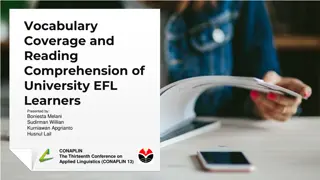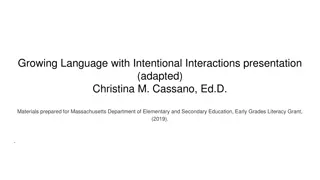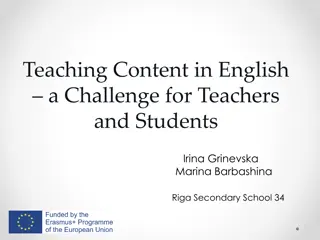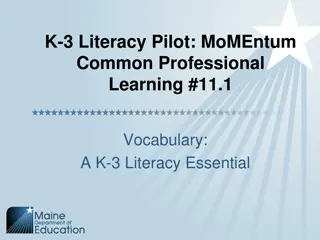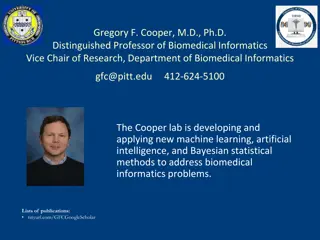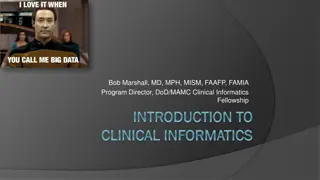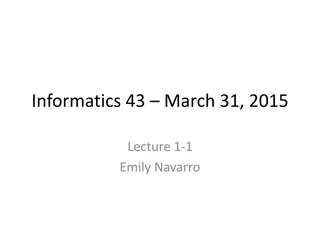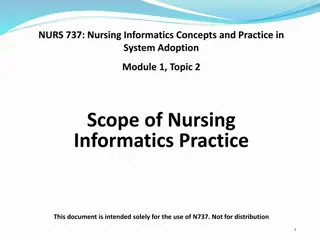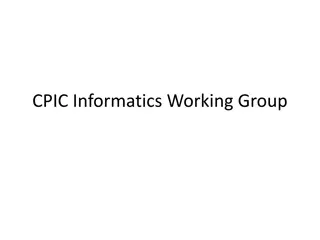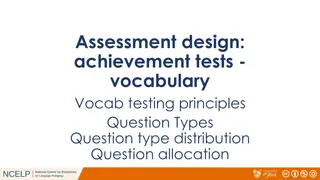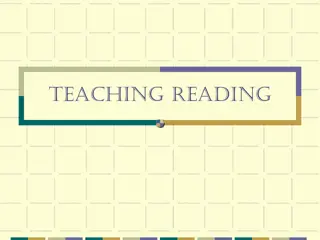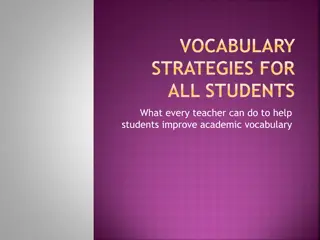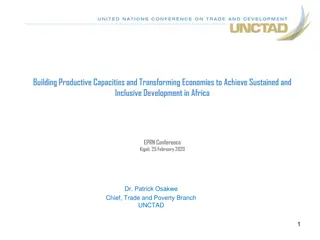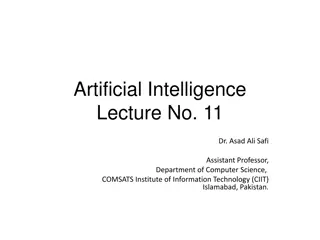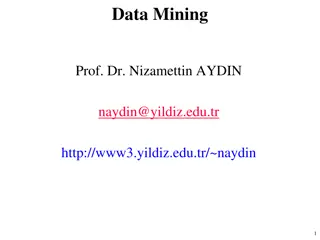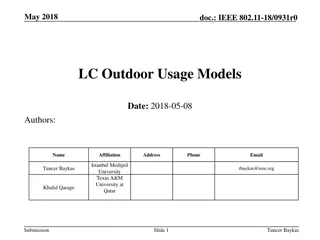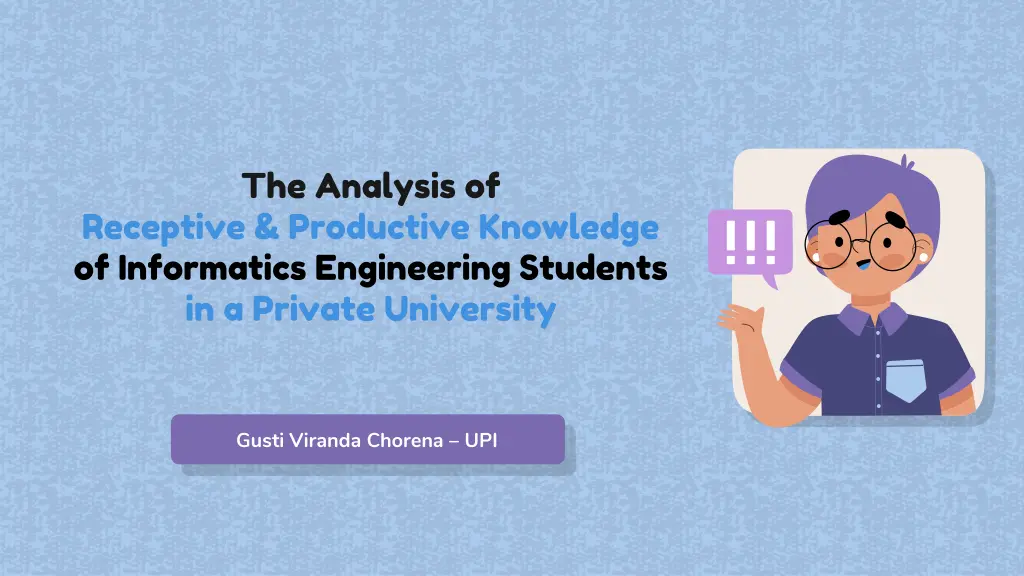
Analysis of Receptive & Productive Knowledge of Informatics Engineering Students
Explore how English language proficiency affects Informatics Engineering students in a private university in Indonesia, focusing on vocabulary knowledge through Receptive and Productive Vocabulary Size Tests. Discover the challenges faced and implications for student learning.
Download Presentation

Please find below an Image/Link to download the presentation.
The content on the website is provided AS IS for your information and personal use only. It may not be sold, licensed, or shared on other websites without obtaining consent from the author. If you encounter any issues during the download, it is possible that the publisher has removed the file from their server.
You are allowed to download the files provided on this website for personal or commercial use, subject to the condition that they are used lawfully. All files are the property of their respective owners.
The content on the website is provided AS IS for your information and personal use only. It may not be sold, licensed, or shared on other websites without obtaining consent from the author.
E N D
Presentation Transcript
The Analysis of Receptive & Productive Knowledge of Informatics Engineering Students in a Private University Gusti Viranda Chorena UPI
Abstract Many universities in Indonesia require the use of English in some aspects of the learning process for non-English Education students, engineering majors for example. This brings up several challenges for students who are not used to the English language in their daily life, especially when they have to use English in a more specific context. It keeps on becoming increasingly challenging as students are presented with assignments in written and spoken forms. Meanwhile, English has become a primary need for engineering students, specifically for the Informatics Engineering Study Program. The activities to be frequently carried out in their learning process are reading, listening to creating texts in written and oral form. These kinds of activities certainly require extensive vocabulary knowledge. This is what later became the fundamental reason for conducting this research. This research uses a mix method design. The data were collected by conducting Receptive Vocabulary Size Test (RVST) and Productive Vocabulary Size Test (PVST) within Academic Word List (AWL) and a set of questionnaires. The results reveal on what level the students vocabulary knowledge and the factors that affect its size. The implication of research results for the students of Informatics Engineering Study Program vocabulary knowledge is then investigated.
Background Literature Review Research Questions About the urgency What are the concerns? What are these about? Methodology Conclusion Findings About the data collection About the results About the overall research
01 About the urgency
Background In today s era, students from English and non-English study backgrounds need to have good English because there has been a great demand for English instruction that results in competent English users both in Western and Asian countries. At the educational level, especially at universities, students are expected to have fluent English in order to be able to fully understand the specific context and convey their ideas. All kinds of learning activities will require all language skills when holding discussions in groups, reporting reading results, to presenting a topic. The use of all these language skills at the university level certainly requires students to have sufficient knowledge and mastery of vocabulary because they are required to have the best selection of terms that are appropriate to the context and specific field. According to early studies using vocabulary tests, undergraduate non-native students who effectively cope with studying at an English-instruction institution have a vocabulary of roughly 5.000-6.000 word families. Unfortunately, previous research on Indonesian students' vocabulary knowledge has mostly focused on university studentsspecialising in English studybackground.
02 What are the concerns?
03 What are these about?
Literature Review Vocabulary Mastery Needs English Needs for Non- English Students There are several essential English needs for engineering students, such as Technical Vocabulary and Writing, Reading Comprehension, Presentations and Professional Communication, Job Interviews, and Understanding International Standards. Academic & University Word Lists Vocabulary knowledge is considered a core component of a foreign or second language and also essential for high language competency in language usage. Receptive & Productive Vocabulary Knowledge Receptive vocabulary refers to terms that native speakers and foreign learners recognize and understand but rarely use; it is utilised passively in either listening or reading. Productive vocabulary is actively employed when speaking and writing. Both lists include terms that do not appear in the General Word List yet appear often in a variety of academic literature. The AWL is a significant improvement over the UWL.
Literature Review The Importance of Vocabulary Size Test Receptive & Productive Vocabulary Size Tests Vocabulary tests can be used to assist students place in the appropriate class level (placement exam), and it is considered that measuring their vocabulary size can offer an indicator of their overall language competency. RVST PVST Previous Research Suryati & Fadilah (2019) research findings indicates that these individuals need more explicit training and practice on the commonly used 3,000- and 5,000-word levels, as well as AWL. Heidari (2019) shows an extension result from the willingness to communicate (WTC) questionnaire that the presence of additional factors in students' vocabulary mastery can determine the amount of the vocabulary size test results. Wero, Machmud, and Husain (2021) revealed that students' receptive and productive vocabulary sizes were 3,110 and 1,841 words, respectively, or approximately 4,905 words in total.
04 About the data collection
Methodology Participants Instruments Research Design Random students either from regular and non-regular classes Parallel quantitative and qualitative data collection Separate data analysis Merged comparison Vocabulary Size Tests Questionnaires
05 About the results
Findings 1. Students Vocabulary Masteries Min. Score 72 60 Max. Score 96 88 Standard Deviation 7,50859157 3,457945501 N items Mean % 25 25 17,16 14,36 68,64 57,44 RVST with AWL PVST with UWL 2. Students Vocabulary Sizes Representative Words 836 570 Vocabulary Size 574 327 % 68,64 57,44 RVST with AWL PVST with UWL
Findings 3. Students Questionnaire Mean Receptive 87,2727273 7,7600375 84,0000000 84,0000000 8,0000000 90,0000000 3,8297084 86,6666667 6,9920590 84,5000000 7,5993421 85,3333333 7,0553368 86,1818182 7,5053700 Standard Deviation Mean Productive 72,3636364 7,1257883 71,1111111 9,3860943 71,1428571 7,5862389 73,3333333 9,4280904 73,0000000 7,1414284 70,0000000 9,3808315 71,1111111 7,2486695 72,3636364 8,9368769 Standard Deviation Variable Comparison Sig. Sig. 17 - 21 22 - 27 Male Female 7 Years > 7 Years Yes No Age 7,2111026 0,172 0,375 Gender 0,051 0,304 Length 0,270 0,226 Extra Course 0,404 0,375
Conclusion 06 Based on the RVST result, it was determined that the Informatics Engineering students acquired more than half of the academic words, with a vocabulary mastery of 68,64%. Meanwhile, the result on the PVST was smaller in the percentage of 57,44%, since the exposure to English reading material is much more than the application of the use of English vocabulary in the academic context. As well as the other factors, such as length of learning and extra courses. The findings indicate that most of the Informatics Engineering students knew more vocabulary receptively than productively. It is highly expected that there will be more research that explores more and deepen the students vocabulary knowledge at the university level outside the English major. Students may learn words or phrases by accident when reading a text, listening to the lecturer, or debating a topic. However, the academic vocabulary is not well studied. Even though vocabulary acquisition has been included into the curriculum, the lecturer should motivate students to acquire and expand their vocabulary.
References Anderson, R. C., & Freebody, P. (1981). Vocabulary knowledge. Comprehension and Teaching: Research Reviews, 77-117. Coxhead, A. (2000). A new academic word list. TESOL Quarterly, 34, 213 238. doi:10.2307/3587951. Coxhead, A. (2016). Reflecting on Coxhead (2000)," A New Academic Word List". TESOL Quarterly, 50(1), 181-185. Coxhead, A., & Nation, P. (2001). The specialised vocabulary of English for academic purposes. Research Perspectives on English for Academic Purposes, 252-267. Creswell, J. W. (2013). Steps in conducting a scholarly mixed methods study. DBER Speaker Series, 48. Daller, H., Milton, J., & Treffers-Daller, J. (Eds.). (2007). Modelling and assessing vocabulary knowledge (Vol. 10). Cambridge: Cambridge University Press. Etikan, I., & Bala, K. (2017). Sampling and sampling methods. Biometrics & Biostatistics International Journal, 5(6), 00149. Hajiyeva, K. (2015). Exploring the relationship between receptive and productive vocabulary sizes and their increased use by Azerbaijani English majors. Antwerpen, Belgium: Canadian Center of Science and Education. Heidari, K. (2019). Willingness to communicate: A predictor of pushing vocabulary knowledge from receptive to productive. Journal of Psycholinguistic Research, 48(...), 903-920. doi: 10.1007/s10936-019-09639-w. Laufer, B., Elder, C., Hill, K., Congdon, P. (2004). Size and strength: do we need both to measure vocabulary knowledge?. Language Testing, 21(2), 202-206. doi: 10.1191/0265532204lt277oa. Laufer, B., & Nation, P. (1999). A vocabulary-size test of controlled productive ability. Language Testing, 16(1), 33-51. Milton, J., & Daller, J. T. (2013). Vocabulary size revisited: the link between vocabulary size and academic achievement. Applied Linguistics Review, 4(1), 151-172. doi: 10.1515/applirev-2013-0007. Nation, P. (1990). Teaching and Learning Vocabulary. New York: Newbury House. Nation, P. & Beglar, D. (2007). A vocabulary size test. The Language Teacher, 31(7), 9-13. Nation, P., & Waring, R. (1997). Vocabulary size, text coverage and word lists. Vocabulary: Description, Acquisition and Pedagogy, 14( ), 6-19. Nation, I. S. P., & Beglar, D. (2007). A vocabulary size test. The Language Teacher, 31 (7), 9 13. Putra, Y. (2009). The relationship between vocabulary size and writing ability of the English language laboratory students at Universitas Pelita Harapan. Thesis. Karawaci: Universitas Pelita Harapan. Richards, J. C., & Renandya, W. A. (Eds.). (2002). Methodology in language teaching: An anthology of current practice. Cambridge University Press. Saville Troike, M. (1984). What really matters in second language learning for academic achievement?. TESOL Quarterly, 18(2), 199-219. Schmitt, N. (1994). Method bias: The importance of theory and measurement. Journal of Organizational Behavior, 15(5), 393-398. Suryati, N., & Fadilah, A. E. (2019). English vocabulary knowledge of EFL engineering students. World Transactions on Engineering and Technology Education, 17(1), 66-70. Wero, Y. T., Machmud, K., & Husain, N. (2021). The Study on Students' Vocabulary Size. Jambura Journal of English Teaching and Literature, 2(1), 22-34. Wilkins, D. A. (1972). Linguistics in language teaching. London, Edward Arnold. Wittink, M. N., Barg, F. K., & Gallo, J. J. (2006). Unwritten rules of talking to doctors about depression: Integrating qualitative and quantitative methods. Ann Fam Med, 4(4), 302 309. Xue, G., & Nation, I. S. (1984). A university word list. Language Learning and Communication, 3(2), 215-229. Zhou, S. (2010). Comparing receptive and productive academic vocabulary knowledge of Chinese EFL learners. Asian Social Science, 60(10), 14-19. Zimmerman, K. J. (2004). The role of vocabulary size in assessing second language proficiency. Provo: Brigham Young University.
Do you have any questions? Do you have any questions? o or any kind suggestions? r any kind suggestions? CREDITS: This presentation template was created by Thank you! Slidesgo Slidesgo, including icons by Flaticon, and infographics & images by Freepik Flaticon Freepik



